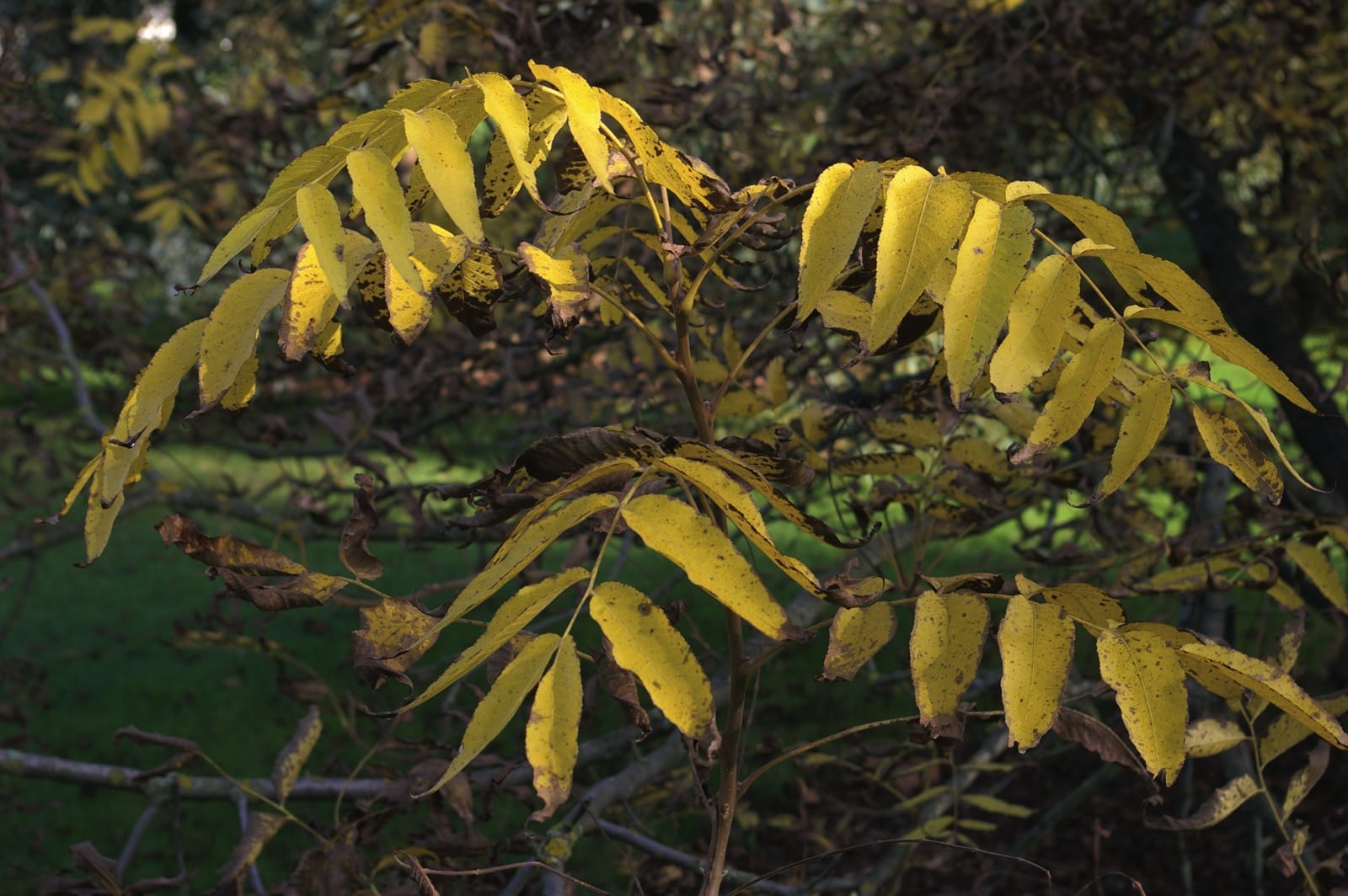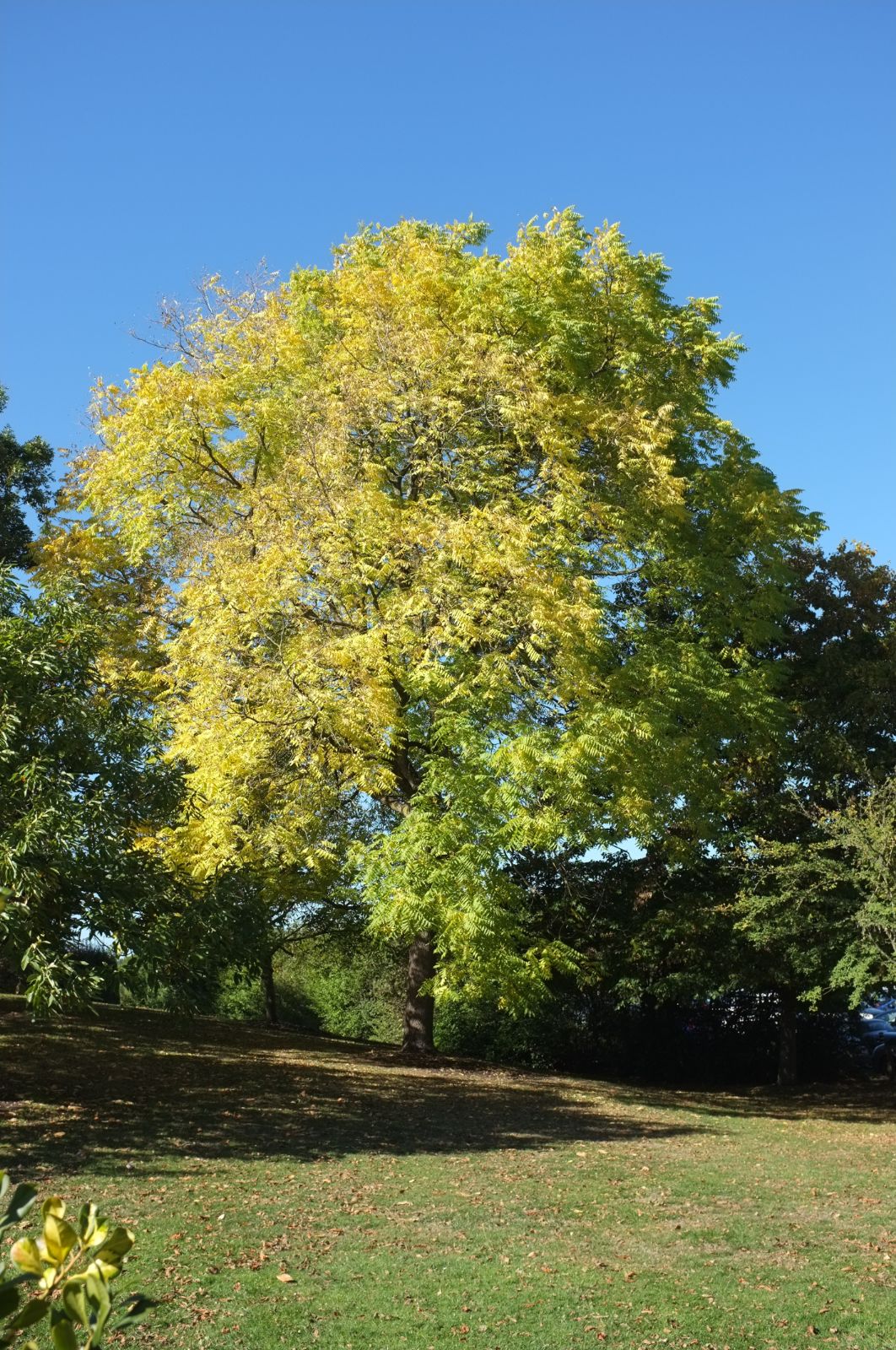Juglans major
Sponsor
Kindly sponsored by
a member of the International Dendrology Society
Credits
Julian Sutton (2019)
Recommended citation
Sutton, J. (2019), 'Juglans major' from the website Trees and Shrubs Online (treesandshrubsonline.
Genus
Common Names
- Arizona Walnut
- Arizona Black Walnut
- Nogal Silvestre
Synonyms
- Juglans microcarpa var. major (Torr.) L.D. Benson
- Juglans torreyi Dode
- Juglans elaeopyren Dode
Other taxa in genus
- Juglans ailantifolia
- Juglans × bixbyi
- Juglans californica
- Juglans cinerea
- Juglans cinerea × mandshurica
- Juglans hindsii
- Juglans hirsuta
- Juglans × intermedia
- Juglans mandshurica
- Juglans mandshurica × regia
- Juglans Mexican Species
- Juglans microcarpa
- Juglans mollis
- Juglans nigra
- Juglans × notha
- Juglans olanchana
- Juglans Paradox hybrids
- Juglans pyriformis
- Juglans × quadrangulata
- Juglans regia
- Juglans sigillata
- Juglans × sinensis
- Juglans steyermarkii
Small to medium tree, 5–18 m, typically with a single, straight trunk to 1.3 m dbh; branches stout, spreading to form an open, rounded crown. Bark smooth and light grey at first, darkening with age and becoming divided into narrow chequered plates. Branchlets slender, rufous-hairy at first, becoming glabrous and silvery-brown; leaf scars notably pale, large, triangular with rounded corners, upper edge notched, glabrous or bordered by poorly defined velvety zone; pith brown. Terminal buds narrowly ovoid or conic, flattened, 4–7 mm. Leaves 18–38 cm; petiole 3–6 cm; terminal leaflet sometimes small or absent; rachis pubescent. Leaflets 9–15(–19), on short petiolules, lanceolate to ovate, sometimes curved, 6.5–10.5 × 1.5–3.4 cm, margins serrate, apex narrowly acuminate, base tapering to rounded or unequal; upper surface yellowish-green, pubescent at first, later hairless except along the major veins; lower surface paler, with tufts of hair in the axils of major veins. Male catkins 5–8 cm; stamens 20–40 per flower. Fruits 1–3, globose to short-ovoid, 2–3.5 cm, smooth, densely covered with hairs; nuts globose to ovoid, 1.8–2.7 cm, deeply longitudinally grooved, surfaces between grooves smooth. Flowering April–May (USA). (Manning 1957; Whittemore & Stone 1997; Grimshaw 2004).
Distribution Mexico Chihuahua, Durango, Sinaloa, and Sonora. United States Arizona, New Mexico; scattered in Texas and S. Oklahoma.
Habitat Along streams and rocky canyon sides, 300–2100 m.
USDA Hardiness Zone 8-9
RHS Hardiness Rating H4
Conservation status Least concern (LC)
Taxonomic note Bean (1981) considered that J. major (Torr.) A. Heller is an illegitimate name (no reason was given) and that J. torreyi Dode is probably the correct name. No contemporary source of reference appears to share these qualms. J. elaeopyren Dode, often adopted in the European literature, certainly does not take priority.
The Arizona Walnut is essentially a Mexican tree, whose range extends into the desert southwest of the United States. However, it is probably these northernmost populations that have provided cultivated stock. In the past it has been confused with the Texas Walnut (J. microcarpa), a genetically distinct (Stanford et al. 2000), smaller fruited tree; it appears to be less hardy than that species.
In the American Southwest, Juglans major is a desert tree, growing along both permanent and ephemeral watercourses, often with Populus fremontii and Platanus wrightii (Pavek 1993), but also as a component of other forest types on valley and canyon sides. It has a well-developed taproot, but can grow even where this does not reach groundwater. Hultine et al. (2003) demonstrated that its root system was able to transport water deep into the soil after rain on summer days when the ground was very dry, potentially an ecologically significant observation.
Juglans major has often been confused with J. microcarpa. They can be distinguished by the following key characters.
| Leaflets 9–15(–19), usually (1.5–)2–3.5 cm wide when mature; stamens 30–40; fruits 2.5–3.5 cm diameter | J. major |
| Leaflets (15–)17–23, usually 1.5(–1.7) cm wide or less; stamens 20–30; fruits not more than 2 cm diameter | J. microcarpa |
Natural hybrids between the two with leaflets intermediate in width are suspected in Texas (Whittemore & Stone 1997).
Manning (1957) describes two variants found only in the Mexican part of this species’ range. In J. major f. stellata Manning the underside of the leaf is hairier than is typical, appearing tomentose. In J. major var. glabrata Manning the leaves are glabrous, with larger leaflets; the fruits are larger, there are many more stamens per flower and – unusually – the pith is often not chambered. This latter plant is almost evergreen in California and has been experimented with as a rootstock for commercial walnuts.
Although the wood of Arizona Walnut has been used in furniture making and for veneers, gun stocks and fence posts (Pavek 1993) it is not an important timber tree, perhaps due to its limited range and the small size of most specimens. The largest wild trees, some as old as 400 years, have mostly been logged (Elias 1980). It has clearly been a culturally significant tree to the Native American peoples of the southwest, the nuts being eaten in diverse ways and their shells boiled to make a brown dye (Moerman 2019). The Apache made a black paint from the outer part of the fruit, and used the tree to make dome shaped shelters while away from home. It is presumably this species that provided the name of the ‘Siamese-twin’ cities of Nogales, either side of the Sonora-Arizona border.
It is not clear when true Juglans major was introduced to Europe (Grimshaw & Bayton 2009). The confusion with J. microcarpa means that records should be approached with an open mind. It is generally considered less hardy than the Texas Walnut, but significant specimens are reported in the United Kingdom from Yorkshire southwards (The Tree Register 2019 – some with explicit queries around identification). These include tall but slender-trunked specimens at Thorp Perrow Arboretum, Yorkshire (18 m × 30 cm, 2014) and the Sir Harold Hillier Gardens, Hampshire (18 m × 27 cm, 2001). A stouter specimen at Cambridge Botanic Garden was measured at 17 m × 82 cm in 2014; this was planted in 1923. At Kew, one tree planted in 1982 had reached 5.5 m by 2004 and appeared to be growing strongly, without evidence that it had suffered frost damage (Grimshaw & Bayton 2009).
In continental Europe, a massive old specimen with thick, procumbent branches almost at ground level, is reported at the Orto Botanico, Rome, while as far east as Froschberg, Austria, a significant tree in the Arboretum der Stadt Linz, with full crown development is claimed as this species (monumentaltrees.com 2019).
This is not a species often seen in North American arboreta. Several accessions at the Arnold Arboretum, Massachusetts, include two from the 1980s and 1990s with good wild provenances (Arnold Arboretum 2019). Outside our area, it is sometimes offered by nurseries in the southwestern United States as a water-efficient tree, and this is surely its major horticultural use.
The fast-growing hybrid MJ209× RA (or simply MJ209), between strains of J. major and J. regia, is increasingly planted in Europe for timber in more-or-less experimental forestry and agroforestry settings (Clark & Hemery 2010; Urban et al. 2018). It is produced in France, in seed orchards with a degree of selection (Vilmorin 2019), although tissue culture of elite clones is under investigation (Licea-Moreno et al. 2015).



